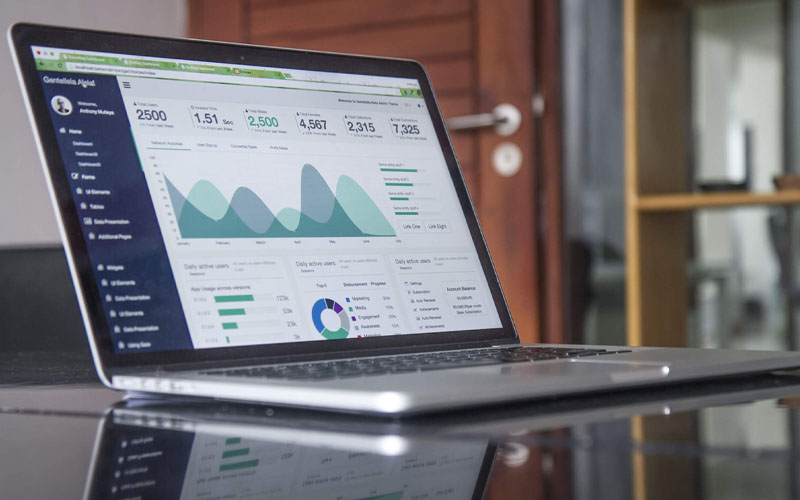
Selecting a niche, building a site and catering to the information needs of your target audience is a great start to achieving success as an online entrepreneur. But you don’t want to rely on people to return on their own to see if you have anything new.
You want to be able to reach out to them, share ideas with them, make recommendations and enjoy a two-way conversation that builds loyalty and helps solidify your brand.
You can do that by creating a database that contains the names and email addresses of your followers. This is a voluntary sign-up process, so it’s a list that includes people who want to hear from you again.
Setting Aside Fears and Concerns About Email Marketing
For some, taking the initiative to own a list of subscribers and send out communications can be daunting. They worry about the recipient not wanting to hear from them, or not remembering who they are.
They feel nervous that maybe their email won’t be worthy of entering someone’s email inbox. But you have to let go of some of this fear and allow yourself to develop the right voice for your audience.
This doesn’t happen overnight. It’s something that comes with time, as you hear feedback from your audience. They’ll guide you on what works best with them – including the types of things you email them about as well as the frequency with which you email them.
Before you get started, know that there will be missteps and it’s okay! You can find what works and tweak your approach. And keep in mind that you won’t be able to keep 100% of the people on your list happy 100% of the time.
You’re going to have people who unsubscribe sometimes – and even those who act unhinged and lash out at you. This isn’t about you. It’s about the fact that they choose to act out while hiding behind a keyboard.
Every marketer endures this kind of behavior – but do you know what else they experience? Wonderful email replies sent from very grateful subscribers who hang on their every word and who can’t wait to see what’s in the next day’s message.
Focus on those people and try not to get your feelings hurt if you email out and get a nasty and rude unsubscribe message. It’s bound to happen. People tend to be more vocal when they’re annoyed but when you get the heartfelt emails of gratitude from those you’ve helped, it will outweigh the others.
Choosing an Email Autoresponder You Can Count On
If you’re in the online marketing business, you’re going to see a variety of tools being sold week after week, year after year for some new email autoresponder that promises to be the best thing since sliced bread.
But what often happens is the tool only works for a short time and either it fails to get through to peoples’ inboxes, or the product creators simply abandon it and fail to support it, leaving you in a lurch with a list in a system that doesn’t work.
A better way to do it is to select from one of the major email autoresponder companies that have sustained themselves over time. If you’re on a tight budget and need to start free, you can work with MailChimp.
This is free to a certain number of emails, and then you have to start paying, but that’s okay because hopefully you’re profiting by that time. The difference is kind of like how it is with watermarks and images.
The free versions have ads in them, but once you’re a paying customer, you get to have the ads removed so there’s no “link leakage” in the email going out to your customers. So there is a tradeoff.
It’s always better to go with a paid system if and when you can afford it. For that, you can either choose from Aweber or GetResponse. Both have been popular with online marketers for years.
They work in a similar manner, and both have affordable levels of usage. So you’ll pay less when you have a smaller number of subscribers, such as 1,000 – than someone who has a list of 100,000 names in their database.
Both of these companies have stellar customer service to help you whenever you may have an issue that needs to be solved. And both have a database of helpful tutorials that walk you through the use of the system and answer any questions you may have.
These tools are sometimes bashed by those who get kicked off the platform, often by people who were abusing the system and spamming recipients. As long as you stay above the board, you’ll be just fine.
One great thing about using these tools is that you can periodically export and download the file of your subscribers. This works even if you’ve built multiple lists, such as one for buyers and one for free subscribers.
Or if you work in multiple niches and have a list for your marketing customers, one for those who follow your homesteading advice, and another for people who found you through your pet niche site.
Where to Capture Names and Email Addresses for Your List
When you have your niche idea, your site built and your email autoresponder system chosen, you’ll be wondering where the capturing of those names and email addresses will take place.
There are several ways you can do it. We’ll cover four of the most common ones and as time goes on, you may find other ways, such as on certain social media sites, that will work for you.
A landing page is a good place to start. This can be on the main root of your domain or elsewhere, such as yourdomain.com/freegift for example. This is a page where you showcase your free gift that the prospect gets in exchange for sharing their name and email address.
It’s a simple, low content page that typically has one or two headline, an image of the free gift, such as an eCover, the opt in box that asks them to enter their name and email address, and a short blurb about what it is they’re getting.
It can be designed to match your site and brand colors. These are sometimes called lead magnet pages, because the free gift serves as a magnet for the leads who come to download your gift.
The sidebar of your blog is another great place to house your lead capturing opt in box. This is a smaller vertical rectangle, where you can have a short title, eCover image and opt in box to allow people who land on your blog to sign up for updates and whatever else you want to gift them.
Some people also use the space below each blog post to share their opt in box. This is beneficial because, if your blog post is long, and the reader has scrolled down to the bottom of the page, they may not remember the box was in the sidebar – so this is your chance to capture their information before they click out.
Another way you can capture leads is through the sale of an information (digital) product. Regardless of which platform you use for this purpose, JVZoo or Warrior Plus, for example, you can enable the system to send out an email autoresponder confirmation to the person who buys your product.
This is good because they’re already proven buyers, so they’ve shown their value and then it will be time for you to cater to their needs and prove your value to them – both in the products they buy and in your emails that go out to them.
If you ever come across someone who wants to be on your list and simply tells you to add their name, Aweber and GetResponse have options for that. You can manually add the subscriber and it will send them a confirmation email to ensure the addition was a welcomed one.
The Difference Between Broadcast and Follow Up Emails
When you start email marketing, you’ll want to employ the use of either follow up emails, broadcast emails – or both! You need to understand the difference first and then make a decision for the emails you want to send out.
A follow up email is an email you queue up in the system that every new subscriber gets. So for example, let’s say you’re in the diet niche and you promise a tip every week for a year will go to their inbox if they enter their name and email address.
You can queue up 52 emails into your follow up autoresponder system and set the days between them, such as every 7 days a new email goes out. This is a great hands off system.
But there is a drawback you should know. If you queue up any timely information, it can become outdated and a burden for you to sort through and update to something more recent.
You wouldn’t want to say anything about a recent study if your follow up email is still being used four years down the line. You want to keep your emails evergreen if you’re putting them into a queue to be used long-term.
Now with a broadcast email, it’s being sent out only to those people who are signed up to your list at that very time. So no one who signs up a week later – or even minutes after your email goes out – will see this communication.
This is perfect for notifying your list about a sale that’s come up or something time-specific that you want to notify them about. Some people only use broadcast emails and don’t employ the use of follow up emails at all.
You can use a mixture of the two if you want. This is perfectly fine. So if you have a weekly newsletter that you send out that has evergreen information, it’s acceptable to use your broadcast email option to notify your list about other, more timely things.
But if you have a daily follow up email going out on top of a daily broadcast email, then your list will be hearing from twice a day, and that can get burdensome to many consumers.
There is one follow up email you’ll want to have queued up and that’s the one for new subscribers. This is the one where you deliver the free download or gift to your new subscribers and include a message about what they can expect being on your list.
It’s a welcome email, and it’s a great way to start off on the right foot. But whether you choose to queue up any additional emails after that is up to you. You may want a hands off approach or you may want to be more involved in choosing what messages go out to your subscribers on a regular basis.
Learning How Often Your List Wants to Hear from You
This is perhaps one of the things that worries new marketers the most. The frequency of emails. This is similar to someone asking how long an eBook should be. Shouldn’t it be as long as it should be to convey the information to you?
Whether that’s 10 pages or 100, you, as a consumer, don’t want to pay for more fluff and filler. You simply want good information. Still, there’s something to be said for people feeling like they got their money’s worth.
You probably wouldn’t spend $20 on a 10-page book, but you would if the book was over 100 pages. You’re conditioned to think the larger book is worth more, even if the information in the shorter book is actually higher quality.
In the case of emails, more isn’t always better. You have to strict the right balance between what the majority of your subscribers want and what you have to offer that makes sense.
Again, you’ll never please everyone. Some people on your list will get mad if you ever email them after the initial welcome email with their freebie. Others will email you checking on you if you happen to skip a single day.
You don’t want to go too long without emailing your list to the point it gets cold and they may not recognize your name anymore. But you probably don’t want to email them five times a day, whenever you happen to think of something interesting.
Sometimes, it depends on the niche that you’re in. If you’re in a stock market niche, then it might make sense to email with breaking news all throughout the day. But in most cases, once a day or a few times a week is sufficient.
Don’t email if you truly have nothing to share. If this happens, it might be an indicator that either you’ve chosen a niche that doesn’t have enough information in it – or you’re not conducting your research very well and you need to learn how to find juicy tidbits of info to send to your readers.
When it comes to numbers, frequency isn’t the only thing marketers worry about. Length of the email is also a concern. Just write enough to convey your message adequately. Don’t drone on and on and look at conversions and response to see if your list loves short, punchy emails or longer communications!





